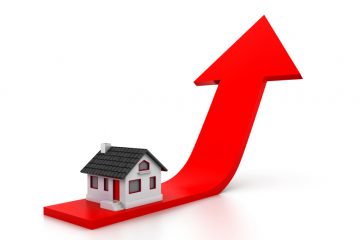Property sales at 16 month high
Property sales across Britain reached a 16-month high during September, according to the latest report from the Royal Institution of Chartered Surveyors. (RICS).
In addition, data from the investigation shows that the last month saw an increase in property prices and mortgage availability. However, there was no improvement in supply, with buyer demand continuing to be higher than instructions to sell.
Highs
Across the UK, sales rose at the greatest pace since May 2014, with 14% more chartered surveyors experiencing an increase. This represented the fifth consecutive month in which sales have increased.
Regionally, the North, East Anglia and Scotland saw the sharpest rises in monthly activity, with the East Midlands the only region to see a small drop. However, this followed an increase in sales during August.
The report suggests that the increase in sales in Britain is reflective of spiral in demand that has been visible since the Spring. What’s more, the number of new buyer enquiries increased for the sixth consecutive month, with 18% of chartered surveyors saying they had seen an increase in demand.
There was good news too for mortgage approvals, which stand at an 18-month high and are up by 12% on the same time on year ago.
Increases
With mortgage finance availability seemingly improving, the average perceived LTV ratio given by respondents nudged up to 79.3%. This said, the ongoing lack of new instructions and the limited stock on the market is still the most serious issue for the sustainability of the market. The number of new instructions has fallen in 13 out of the last 14 months.
RICS said that 40% feel the greatest factor behind the negative trend in instructions is the lack of stock already fore sale. This is in turn deterring would-be homemovers as they struggle to locate a suitable property to move to.
As a result of the constant supply/demand imbalance, the national house price indicator continues to increase, which is likely to be highlighted in key house price indices over the rest of 2015.
In the lettings market, tenant demand increased once again, continuing a trend seen since December 2014.
Replenishment
‘Activity is now picking up which is encouraging but unless the stock being sold is replenished, there is a limit to how sustainable the modest improvement in market turnover will prove to be,’ said Simon Rubinsohn, RICS chief economist. He went on to say, ‘unfortunately, the indications are that we are locked in a cycle where the lack of available properties on agents’ books is itself deterring some potential vendors from thinking about putting their own property on the market.’[1]
‘Against this backdrop, it is hard not to see prices continuing to move higher over the coming months and into the early part of 2016, notwithstanding the present concerns regarding the affordability of housing in some areas of the UK that are being highlighted by respondents,’ Rubinsohn added.[1]
[1] http://www.propertywire.com/news/europe/uk-property-prices-sales-2015100911075.html










